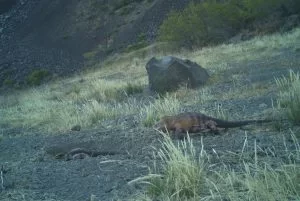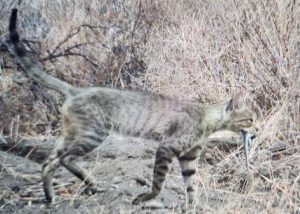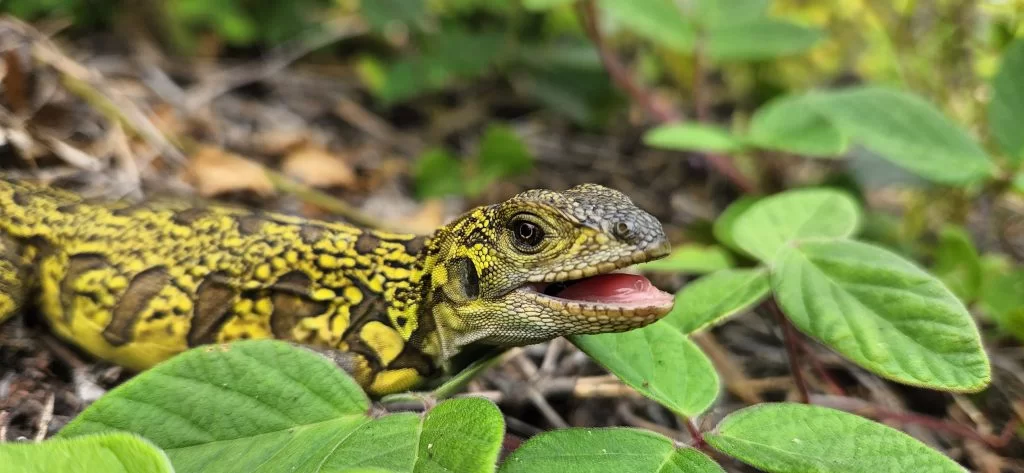
First-ever photos of juvenile Pink Iguanas showing characteristic striping © GNPD / Galápagos Conservancy

Photo of the first documented nesting site by Pink Iguanas © GNPD / Galápagos Conservancy
Since the “Galapagos Initiative” announced in October 2021 to bring together the efforts of the GNPD and the Galapagos Conservancy to help save the pink iguana, seven expeditions have been conducted to assess the current status and identify the threats facing the species; in recent months, the team documented nesting sites and detected active nests as well as hatchlings and juvenile iguanas of different ages.

Non-native feral cats preying on Pink Iguana hatchlings. © GNPD / Galápagos Conservancy
Genetic analysis to confirm the identification of juvenile pink iguanas is ongoing, while camera traps deployed by the team throughout the volcano have documented ample evidence of pink iguana mating and nesting activity, and even potential competition with conspecifics with whom they share Wolf Volcano’s habitat.
At the same time, there is great concern about the abundant presence of feral cats in the iguana’s living and nesting areas, representing a serious threat to these reptiles in their most critical and vulnerable phase, being currently considered one of the main causes for the lack of documented recruitment in the pink iguana population.
The Galapagos Initiative is now urgently focused on providing greater facilities for monitoring, research and protection of the pink iguana nesting areas through the implementation of a permanent station, funded by the Galapagos Conservancy, on the summit of the volcano with 360 degree visibility.
Danny Rueda, Director of the Galapagos National Park, thanked the Galapagos Conservancy for their support and assured that “this remote base will facilitate the conservation and monitoring work on the volcano, especially to guarantee the conservation and restoration of the pink iguana population”.



